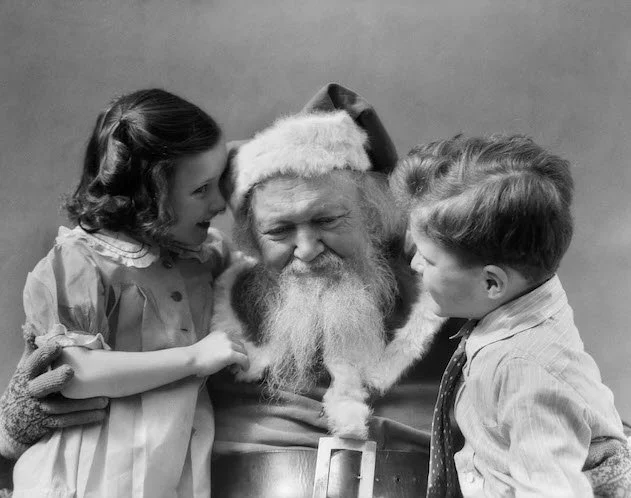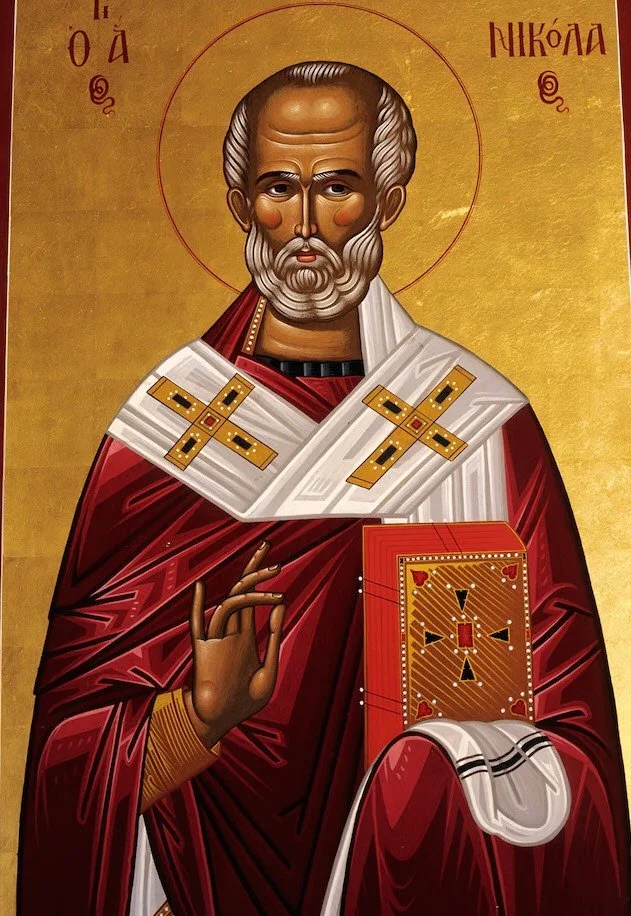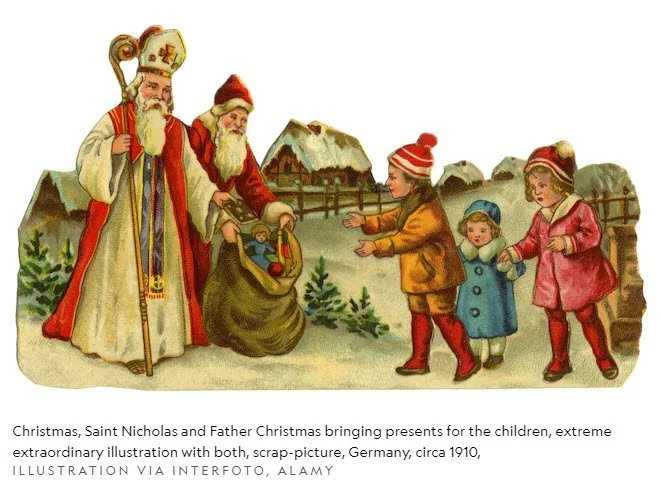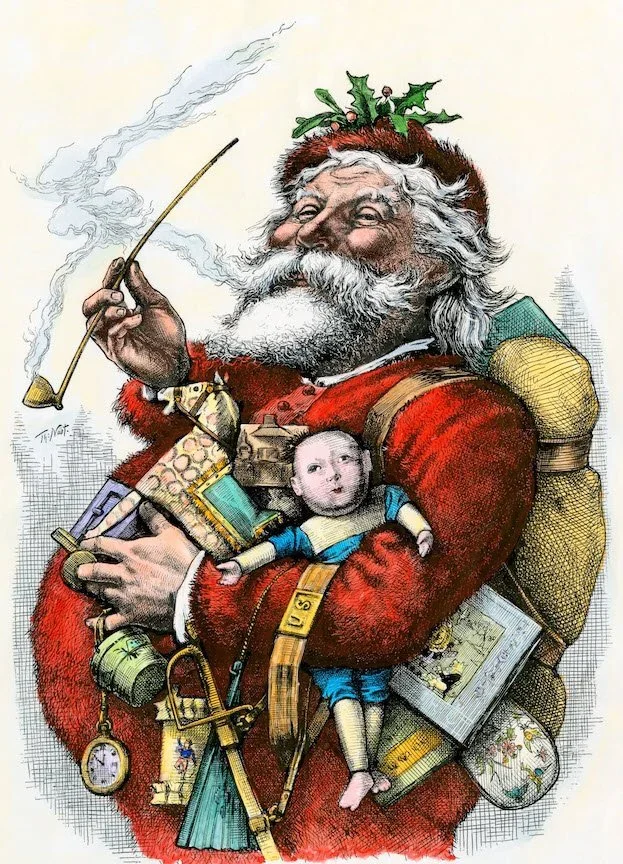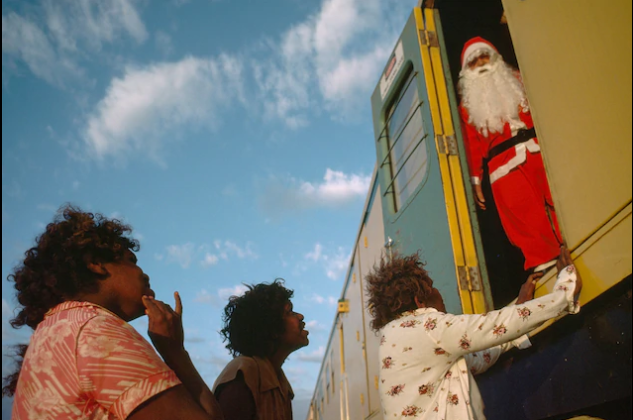From St. Nicholas to Santa Claus: the surprising origins of Kris Kringle
Santa Claus, Father Christmas, St. Nick—no matter the name, everyone knows the story of this plump, jolly, bringer of gifts. Or do they?
BYBRIAN HANDWERK
PUBLISHED DECEMBER 25, 2018
Santa Claus wasn't always "chubby and plump, a right jolly old elf."
PHOTOGRAPH BY CLASSICSTOCK/CORBIS
Any kid can tell you where Santa Claus is from—the North Pole. But his historical journey is even longer and more fantastic than his annual, one-night circumnavigation of the globe.
The progenitor of the modern American Santa was born in the Mediterranean during the Roman Empire, his legend evolved across northern Europe, and he finally assumed his now-familiar form on the shores of the New World. Who is this ancestor of Santa, and how did he change over time? (See "Christmas in July—Inside a Santa Summer Camp.")
Jolly Old St. Nicholas?
Every December 6, the faithful celebrate St. Nicholas Day in cities all over the world, with the largest ones taking place in Europe. Images of St. Nicholas vary considerably, but none of them look much like the red-cheeked, white-bearded old man seen everywhere today. One of the most compelling views of the real St. Nick, who lived in the third and fourth centuries, was created not by ancient artists but by using modern forensic facial reconstruction.
Scholarly debate over where the remains of the Greek bishop rest continues to this day, but traditionally, it was believed that the bones of St. Nicholas were stolen by Italian sailors during the 11th century and taken to the crypt of the Basilica di San Nicola on the southeast coast of Italy. When the crypt was repaired in the 1950s, the saint's skull and bones were documented with x-ray photos and thousands of detailed measurements. (For theories on other possible resting places of St. Nicholas, read: "Could the Remains of Santa Claus Be in This Turkish Church?")
Caroline Wilkinson, a facial anthropologist at the University of Manchester (England), used these data and modern software simulations to create a modern reconstruction of the long-dead man. Wilkinson put a human face on Santa's original namesake—one with a badly broken nose, possibly suffered during the persecution of Christians under the Roman Emperor Diocletian.
Much of her work is necessarily subject to interpretation. The size and shape of the facial muscles that once covered Nicholas's skull had to be inferred, and the shape of that skull itself was recreated from two-dimensional data. Digital artists added details that were based on best guesses, including the olive-toned skin most common among Greek Mediterraneans like Nicholas, brown eyes, and the gray hair of a 60-year-old man.
"We are bound to have lost some of the level of detail you would get by working from photographs, but we believe this is the closest we are ever going to get to him," Wilkinson said in the BBC Two feature film of the project entitled The Real Face of Santa.
From bishop to gift giver
How did this St. Nicholas turn into the North Pole-dwelling bringer of Christmas gifts? The original saint was a Greek born in the late third century, around 280 A.D. He became bishop of Myra, a small Roman town in modern Turkey. Nicholas was neither fat nor jolly but developed a reputation as a fiery, wiry, and defiant defender of church doctrine during the Great Persecution in 303, when Bibles were burned and priests made to renounce Christianity or face execution.
Nicholas defied these edicts and spent years in prison before the Roman emperor Constantine ended Christian persecution in 313 with the Edict of Milan. Nicholas's fame lived long after his death (on December 6 in the mid-fourth century, around 343) because he was associated with many miracles, and reverence for him continues to this day independent of his Christmas connection. He is the protector of many types of people, from orphans to sailors to prisoners.
A religious icon representing St. Nicholas.
PHOTOGRAPH BY CLASSICSTOCK/CORBIS
Nicholas rose to prominence among the saints because he was the patron of so many groups. By about 1200, explained University of Manitoba historian Gerry Bowler, author of Santa Claus: A Biography, he became known as a patron of children and magical gift bringer because of two great stories from his life.
In the better-known tale, three young girls are saved from a life of prostitution when young Bishop Nicholas secretly delivers three bags of gold to their indebted father, which can be used for their dowries.
"The other story is not so well known now but was enormously well known in the Middle Ages," Bowler said. Nicholas entered an inn whose keeper had just murdered three boys and pickled their dismembered bodies in basement barrels. The bishop not only sensed the crime, but resurrected the victims as well. "That's one of the things that made him the patron saint of children."
For several hundred years, circa 1200 to 1500, St. Nicholas was the unchallenged bringer of gifts and the toast of celebrations centered around his feast day, December 6. The strict saint took on some aspects of earlier European deities, like the Roman Saturn or the Norse Odin, who appeared as white-bearded men and had magical powers like flight. He also ensured that kids toed the line by saying their prayers and practicing good behavior.
But after the Protestant Reformation began in the 1500s, saints like Nicholas fell out of favor across much of northern Europe. "That was problematic," Bowler said. "You still love your kids, but now who is going to bring them the gifts?"
Bowler said that, in many cases, that job fell to baby Jesus, and the date was moved to Christmas rather than December 6. "But the infant's carrying capacity is very limited, and he's not very scary either," Bowler said. "So the Christ child was often given a scary helper to do the lugging of presents and the threatening of kids that doesn't seem appropriate coming from the baby Jesus."
Some of these scary Germanic figures again were based on Nicholas, no longer as a saint but as a threatening sidekick like Ru-klaus (Rough Nicholas), Aschenklas (Ashy Nicholas), and Pelznickel (Furry Nicholas). These figures expected good behavior or forced children to suffer consequences like whippings or kidnappings. Dissimilar as they seem to the jolly man in red, these colorful characters would later figure in the development of Santa himself. (Related: "Who Is Krampus? Explaining the Horrific Christmas Devil.")
Coming to America
In the Netherlands, kids and families simply refused to give up St. Nicholas as a gift bringer. They brought Sinterklaas with them to New World colonies, where the legends of the shaggy and scary Germanic gift bringers also endured.
But in early America Christmas wasn't much like the modern holiday. The holiday was shunned in New England, and elsewhere it had become a bit like the pagan Saturnalia that once occupied its place on the calendar. "'It was celebrated as a kind of outdoor, alcohol-fueled, rowdy community blowout," Bowler said. "That's what it had become in England as well. And there was no particular, magical gift bringer."
Then, during the early decades of the 19th century, all that changed thanks to a series of poets and writers who strove to make Christmas a family celebration—by reviving and remaking St. Nicholas.
WHO WAS SAINT NICHOLAS?
Find out how Old Saint Nick became a beloved figure all over the world, and how his image has changed over the years.
Washington Irving's 1809 book Knickerbocker's History of New York first portrayed a pipe-smoking Nicholas soaring over the rooftops in a flying wagon, delivering presents to good girls and boys and switches to bad ones.
In 1821 an anonymous illustrated poem entitled "The Children's Friend" went much further in shaping the modern Santa and associating him with Christmas. "Here we finally have the appearance of a Santa Claus," Bowler said. "They've taken the magical gift-bringing of St. Nicholas, stripped him of any religious characteristics, and dressed this Santa in the furs of those shaggy Germanic gift bringers."
That figure brought gifts to good girls and boys, but he also sported a birch rod, the poem noted, that "directs a Parent's hand to use when virtue's path his sons refuse." Santa's thin wagon was pulled by a single reindeer—but both driver and team would get a major makeover the next year.
In 1822 Clement Clarke Moore wrote "A Visit From St. Nicholas," better known today as "The Night Before Christmas," for his six children, with no intention of adding to the fledgling Santa Claus phenomenon. It was published anonymously the next year, and to this day the plump, jolly Santa described therein rides a sleigh driven by eight familiar reindeer.
"It went viral," Bowler said. But familiar as the poem is, it still leaves much to the imagination, and the 19th century saw Santa appear in different-colored clothing, in sizes from miniature to massive, and in a variety of different guises. "I have a wonderful picture of him that looks exactly like George Washington riding a broomstick," Bowler said.
It wasn't until the late 19th century, he added, that the image of Santa became standardized as a full-size adult, dressed in red with white fur trim, venturing out from the North Pole in a reindeer-driven sleigh and keeping an eye on children's behavior.
The jolly, chubby, grandfatherly face of this Santa was largely created by Thomas Nast, the great political cartoonist in an era that featured many. "However, Nast did leave him half-sized," Bowler added, "and in what I think are rather indecent long johns."
Merry old Santa Claus 1880s, Thomas Nast
ILLUSTRATION BY THOMAS NAST, NORTH WIND PICTURE ARCHIVES/ALAMY
Once firmly established, North America's Santa then underwent a kind of reverse migration to Europe, replacing the scary gift bringers and adopting local names like Père Noël (France) or Father Christmas (Great Britain). "What he's done is pretty much tame these Grimm's Fairy Tales-type characters from the late medieval days," Bowler said.
The Santa problem
Though he undoubtedly means well, Santa has certainly stirred up, and continues to create, more than his fair share of controversy.
In Russia, Santa Claus fell afoul of Josef Stalin. Before the Russian Revolution, Grandfather Frost (Ded Moroz) was a favored figure of Christmas who had adopted characteristics of proto-Santas like the Dutch Sinterklaas. "When the Soviet Union was formed, the communists abolished the celebration of Christmas and gift bringers," Bowler said.
"Then in the 1930s, when Stalin needed to build support, he allowed the reemergence of Grandfather Frost not as a Christmas gift bringer but as a New Year's gift bringer," Bowler added. Attempts to displace Christmas in Russia were ultimately unsuccessful, as were Soviet attempts to spread a secular version of Grandfather Frost, complete with blue coat to avoid Santa confusion, across Europe.
"Everywhere they went after World War II, the Soviets tried to replace the native gift bringers in places like Poland or Bulgaria," Bowler explained. "But local people just sort of held their noses until the Soviet Union collapsed in 1989 and returned to their own traditions."
Santa remains a politicized figure around the world. American troops spread their version of the jolly man around the world in the years immediately following World War II, and he was generally welcomed, Bowler said, as a symbol of American generosity in rebuilding war-ravaged lands.
Nowadays, however, people in many nations have Santa on their own naughty list, either because he represents the secular side of Christmas at the expense of the religious. Sometimes Santa is rejected because he's not a local. "In places like the Czech Republic, the Netherlands, Austria, and Latin America, they all have very strong anti-Santa movements because they are trying to preserve their native Christmas gift bringers and customs, and protect them from the North American Santa," he said.
Such efforts seem unlikely to stop a growing interest in Santa Claus, but their organizers may save him a few stops on his busy Christmas Eve schedule.
THE NOT-SO-POLAR EXPRESS
A locomotive inspector dressed as Santa Claus greets Aboriginal women from a supply train near Watson, Australia.
This photograph was published in a June 1986 National Geographic article about the Tea and Sugar Train, which delivered supplies to the most remote parts of the Australian outback. (Read "First Australians" in National Geographic magazine.)
PHOTOGRAPH BY WILLIAM ALBERT ALLARD, NATIONAL GEOGRAPHIC
OLD SCHUSS NICK
A man dressed as Santa Claus skis near the character's legendary home at the North Pole.
At 90° north latitude, the geographic North Pole lies in the middle of the Arctic Ocean. (Read more about the North Pole.)
PHOTOGRAPH BY GORDON WILTSIE, NAT GEO IMAGE COLLECTION
SUBWAY SANTAS
A quartet of department-store Santas wait for the subway in New York City.
This photo appeared in a September 1990 National Geographic article about Broadway.
(From Santa to shopping, National Geographic explains the origins of Christmas traditions.)
PHOTOGRAPH BY JODI COBB, NAT GEO IMAGE COLLECTION
SANTA FOR HIRE
Hoping to earn money for the holiday season, a man dressed as Santa Claus walks the Piazza Vittoria in Naples, Italy, offering to pose with children for a fee.
This photo was first published in a March 1998 National Geographic article about Naples.
PHOTOGRAPH BY DAVID ALAN HARVEY, NATIONAL GEOGRAPHIC
A SANTA FOR ALL SEASONS
A wooden cutout of Santa, in summer vacation mode, helps decorate a leafy lakeside retreat in Whitesburg, Kentucky. (Check out National Geographic's guide to Kentucky.)
PHOTOGRAPH BY RANDY OLSON, NAT GEO IMAGE COLLECTION
BIG OLD SAINT NICK
An oversize Santa statue is installed in a Moscow mall.
The Russian equivalent of Santa Claus is Ded Moroz, or Grandfather Frost, who delivers gifts to children during New Year celebrations. Russians celebrate Christmas on January 7, in line with the Julian calendar.
PHOTOGRAPH BY JODI COBB, NAT GEO IMAGE COLLECTION
CHEER AND CH-CHING
Bucking tradition in China, a young woman dressed as Santa Claus stands in a shopping district.
Because only about one percent of China's population is Christian, most Chinese celebrate the holiday in secular fashion. That means embracing commercialism and various Western traditions—like Santa.
PHOTOGRAPH BY FRITZ HOFFMAN, NATIONAL GEOGRAPHIC
OLD SAINT NICK, OLD-FASHIONED
In the Middle East, where Jesus was born—thus inspiring the Christmas holiday—a man assumes the guise of a classic Saint Nicholas, complete with cloth sack and candle.
Representations of Santa Claus have changed drastically over the years, but one element exists in nearly all depictions: the long white beard.
PHOTOGRAPH BY REZA, NATIONAL GEOGRAPHIC
This story has been updated. It was originally published on December 20, 2013.

